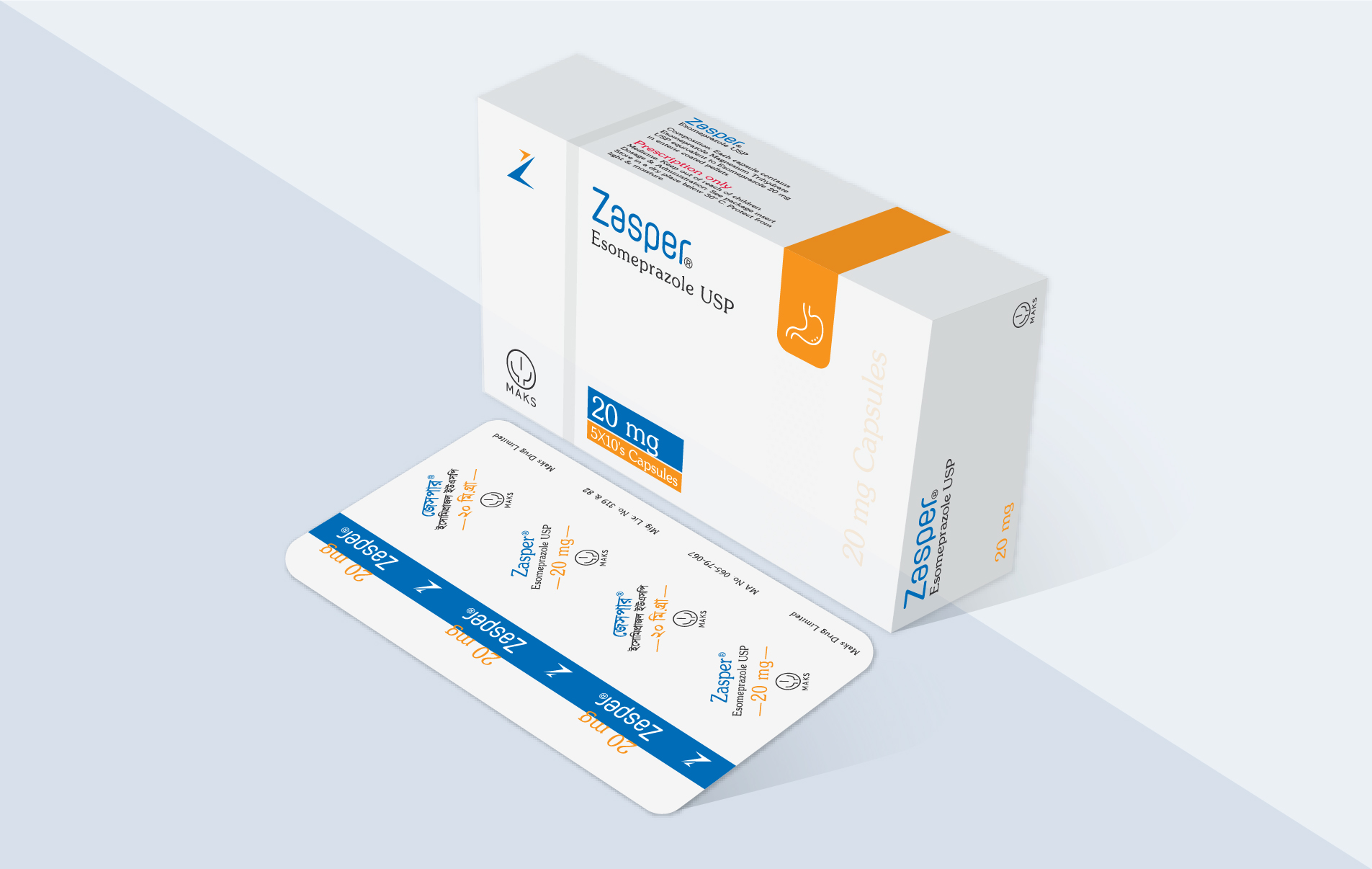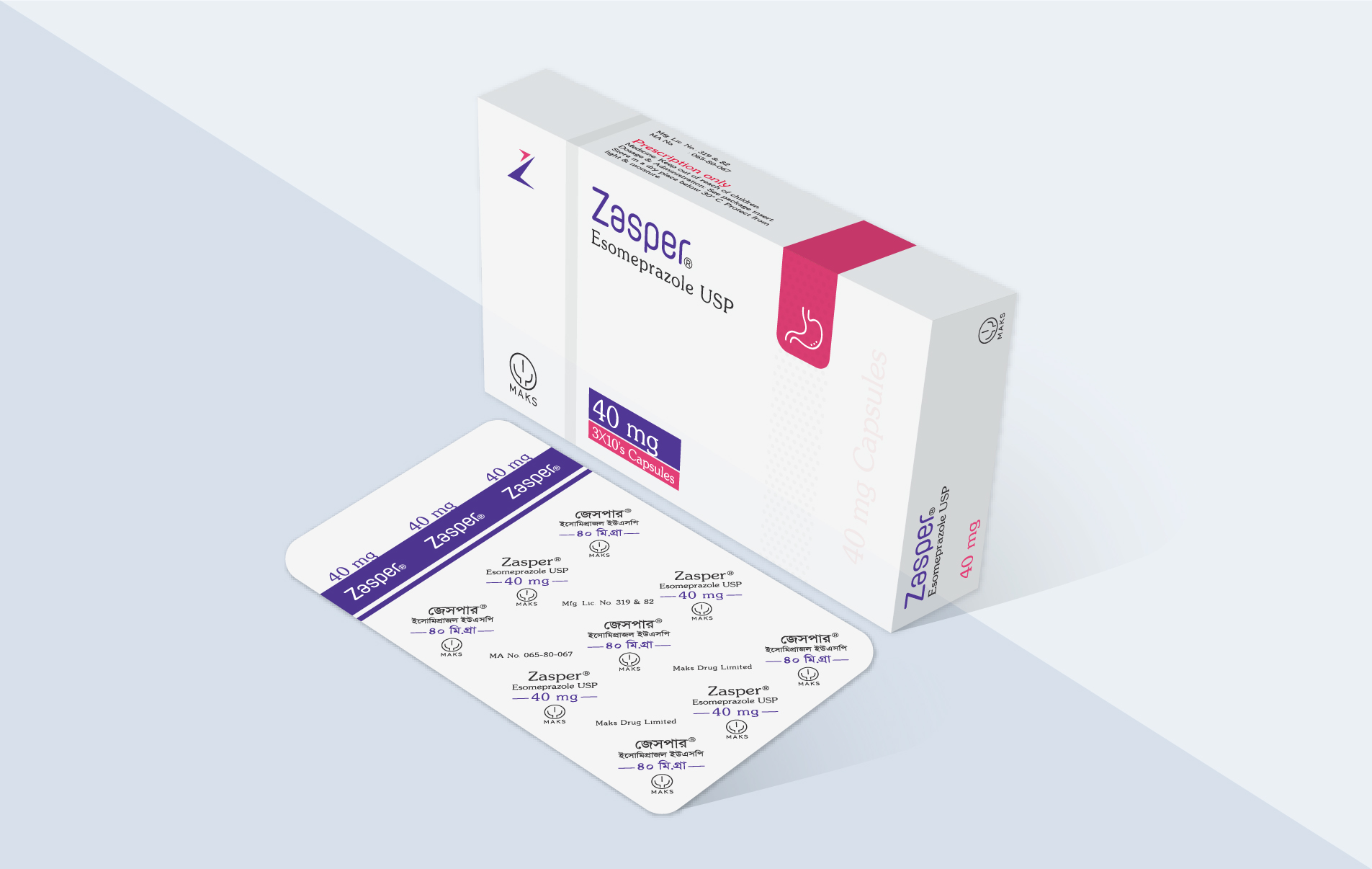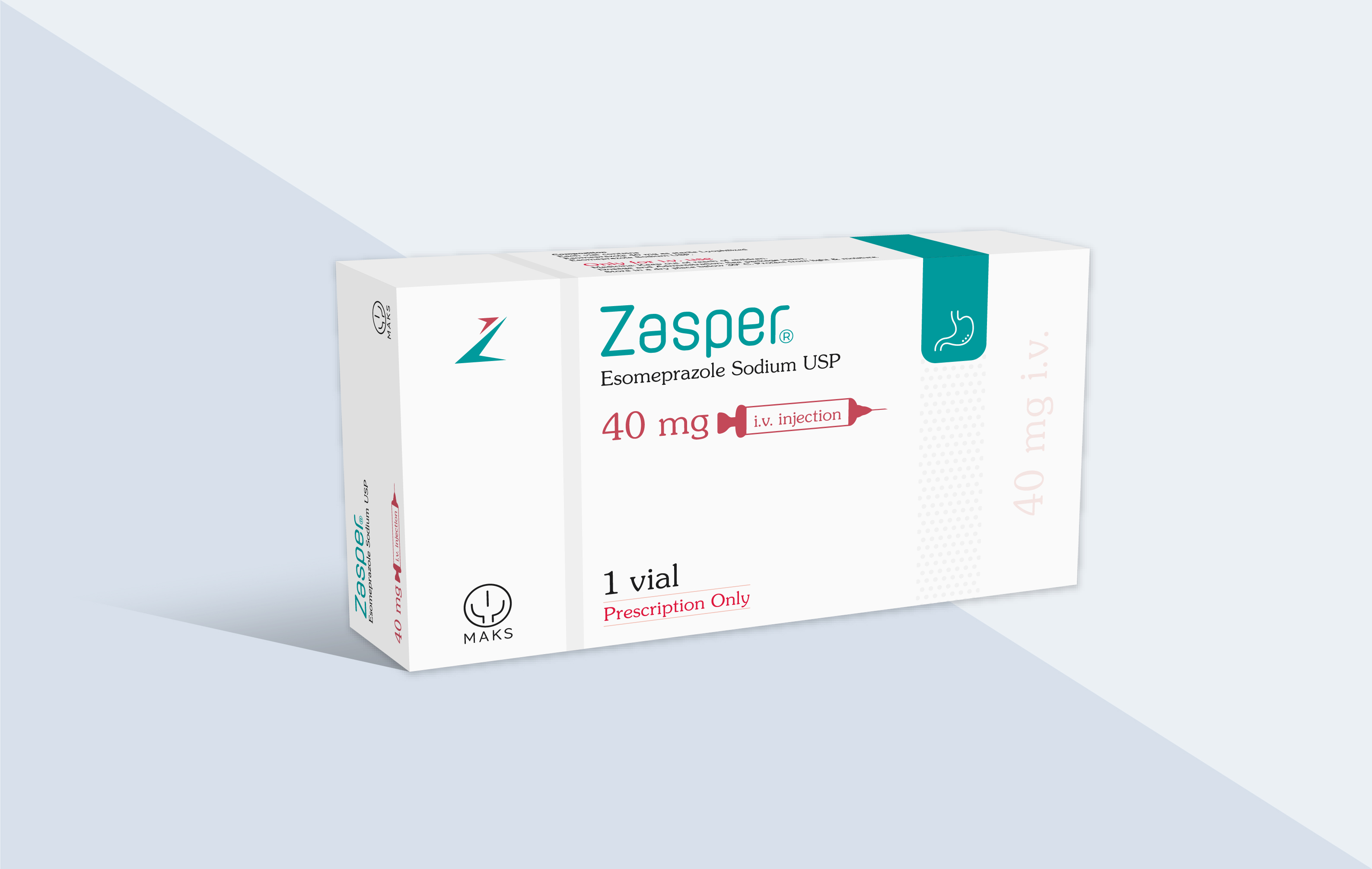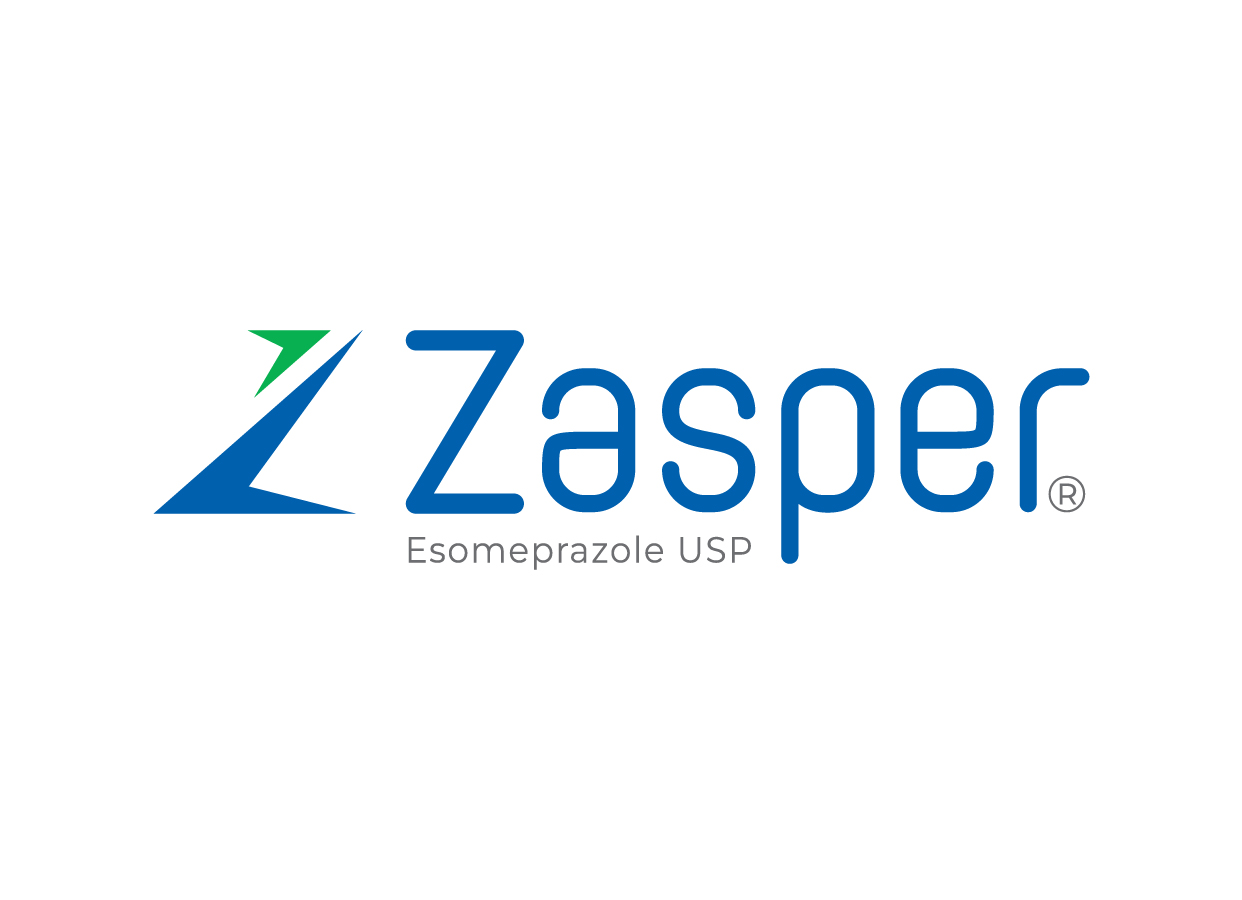Zasper (Esomeprazole)
Therapeutic Group: Proton Pump Inhibitors (PPI)
Zasper ® 20 mg Capsule: Each capsule contains Esomeprazole Magnesium Trihydrate USP equivalent to Esomeprazole 20 mg in enteric-coated pellets.
Zasper ® 40 mg Capsule: Each capsule contains Esomeprazole Magnesium Trihydrate USP equivalent to Esomeprazole 40 mg in enteric-coated pellets.
Esomeprazole is
a proton pump inhibitor that suppresses gastric acid secretion by specific
inhibition of the H+/K+-ATPase, the ‘Proton Pump’ of the gastric parietal cell.
Esomeprazole is
indicated-
» To relieve
from chronic heartburn symptoms and other symptoms associated with GERD
» For the
healing of Erosive Esophagitis
» For
maintenance of healing of Erosive Esophagitis
» In
combination with Amoxicillin and clarithromycin for eradication of Helicobacter pylori infection
in patients with Duodenal Ulcer disease.
» Zollinger-Ellison
Syndrome
» Acid related Dyspepsia
» Duodenal & Gastric ulcer
Esomeprazole capsules should be swallowed whole and taken one hour before meal.
Healing of Erosive Esophagitis: 20 mg or 40 mg Once Daily for 4-8 Weeks. The majority of patients are healed within 4 to 8 weeks. For patients who don’t heal after 4-8 weeks, an additional 4-8 weeks of treatment may be considered. Maintenance of Healing of Erosive Esophagitis: 20 mg Once Daily (Clinical studies did not extend 6 months). Symptomatic GERD: 20 mg Once Daily for 4 Weeks. If symptoms do not resolve completely after 4 weeks, an additional 4 weeks of treatment may be considered. Helicobacter Pylori Eradication: Triple Therapy to reduce the risk of Duodenal Ulcer recurrence-Esomeprazole 40 mg Once Daily for 10 days, Amoxicillin 1000 mg Twice Daily for 10 days, Clarithromycin 500 mg Twice Daily for 10 days. Zollinger-Ellison Syndrome: The dose is 20-80 mg once daily. The dosage should be adjusted individually and treatment continued as long as clinically indicated. Acid Related Dyspepsia: 20-4o mg once daily for 2-4 weeks according to response. Duodenal Ulcer: 20 mg once daily for 2-4 weeks. Gastric Ulcer: 20-40 mg once daily for 4-8 weeks.
The most
frequently occurring adverse events reported with Esomeprazole include
headache, diarrhoea, nausea, flatulence, abdominal pain, constipation and dry
mouth. There are no difference in types of related adverse events seen during
maintenance treatment upto 12 months compared to short term treatment.
General:
Symptomatic response to therapy with esomeprazole does not preclude the
presence of gastric malignancy.
Esomeprazole is
extensively metabolized in the liver by CYP2C19 and CYP3A4. In vitro and in
vivo studies have shown that Esomeprazole is not likely to inhibit CYPs 1A2,
2A6, 2C9, 2D6, 2E1 and 3A4. No clinically relevant interactions with drugs
metabolized by these CYP enzymes would be expected. Drug interaction studies
have shown that Esomeprazole does not have any clinically significant
interactions with phenytoin, warfarin, quinidine, clarithromycin or
Amoxicillin.
Esomeprazole
may potentially interfere with CYP2C19, the major Esomeprazole metabolising
enzyme. Co-administration of Esomeprazole 30 mg and diazepam, a CYP2C19
substrate has resulted in a 45% decrease in clearance of diazepam. Increased
plasma levels of diazepam have been observed 12 hours after dosing and onwards.
Esomeprazole inhibits gastric acid secretion. Therefore, Esomeprazole may
interfere with the absorption of drugs where gastric pH is an important
determinant of bioavailability (e.g., ketoconazole, iron salts and digoxin).
Co-administration of oral contraceptives, diazepam, phenytoin, or quinidine do
not seem to change the pharmacokinetic profile of Esomeprazole.
A single oral
dose of Esomeprazole at 510 mg/kg (about 103 times the human dose on a body
surface area basis), has been lethal to rats. The major signs of acute toxicity
are reduced motor activity, changes in respiratory frequency, tremor, ataxia,
and intermittent clonic convulsions. There have been no reports of overdose
with Esomeprazole.
No specific
antidote for Esomeprazole is known. Since Esomeprazole is extensively protein
bound, it is not expected to be removed by dialysis. In the event of
overdosage, treatment should be symptomatic and supportive. As with the
management of any overdose, the possibility of multiple drug ingestion should
be considered.
Store at
temperature not exceeding 30º C in a dry place. Protect from light and
moisture.
Zasper ® 20 mg Capsule: Each box contains 5X10’s capsules in Alu-Alu blister strips.
Zasper ® 40 mg Capsule: Each box contains 3X10’s capsules in Alu-Alu blister strips.



